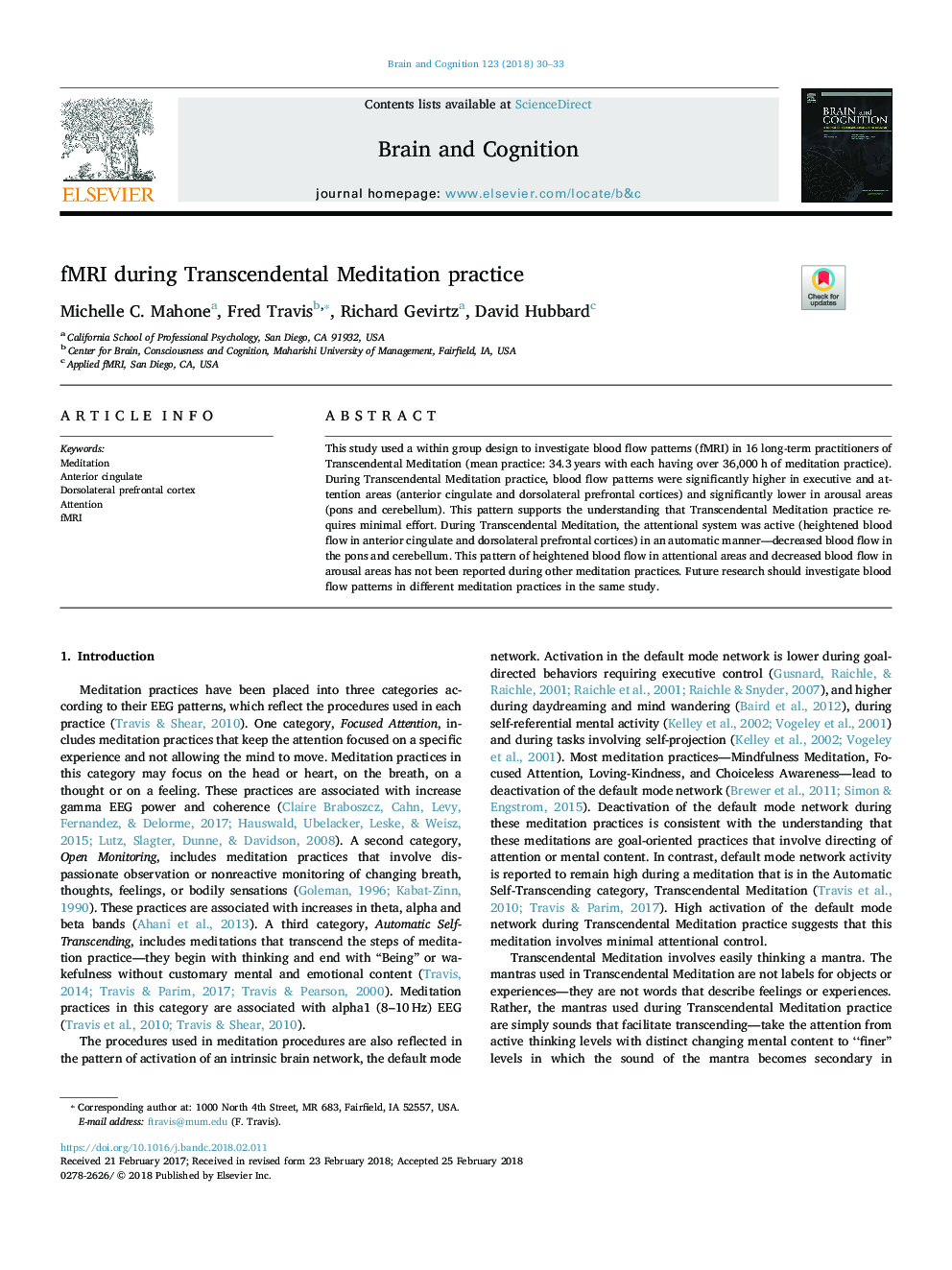| Article ID | Journal | Published Year | Pages | File Type |
|---|---|---|---|---|
| 7282610 | Brain and Cognition | 2018 | 4 Pages |
Abstract
This study used a within group design to investigate blood flow patterns (fMRI) in 16 long-term practitioners of Transcendental Meditation (mean practice: 34.3â¯years with each having over 36,000â¯h of meditation practice). During Transcendental Meditation practice, blood flow patterns were significantly higher in executive and attention areas (anterior cingulate and dorsolateral prefrontal cortices) and significantly lower in arousal areas (pons and cerebellum). This pattern supports the understanding that Transcendental Meditation practice requires minimal effort. During Transcendental Meditation, the attentional system was active (heightened blood flow in anterior cingulate and dorsolateral prefrontal cortices) in an automatic manner-decreased blood flow in the pons and cerebellum. This pattern of heightened blood flow in attentional areas and decreased blood flow in arousal areas has not been reported during other meditation practices. Future research should investigate blood flow patterns in different meditation practices in the same study.
Related Topics
Life Sciences
Neuroscience
Cognitive Neuroscience
Authors
Michelle C. Mahone, Fred Travis, Richard Gevirtz, David Hubbard,
